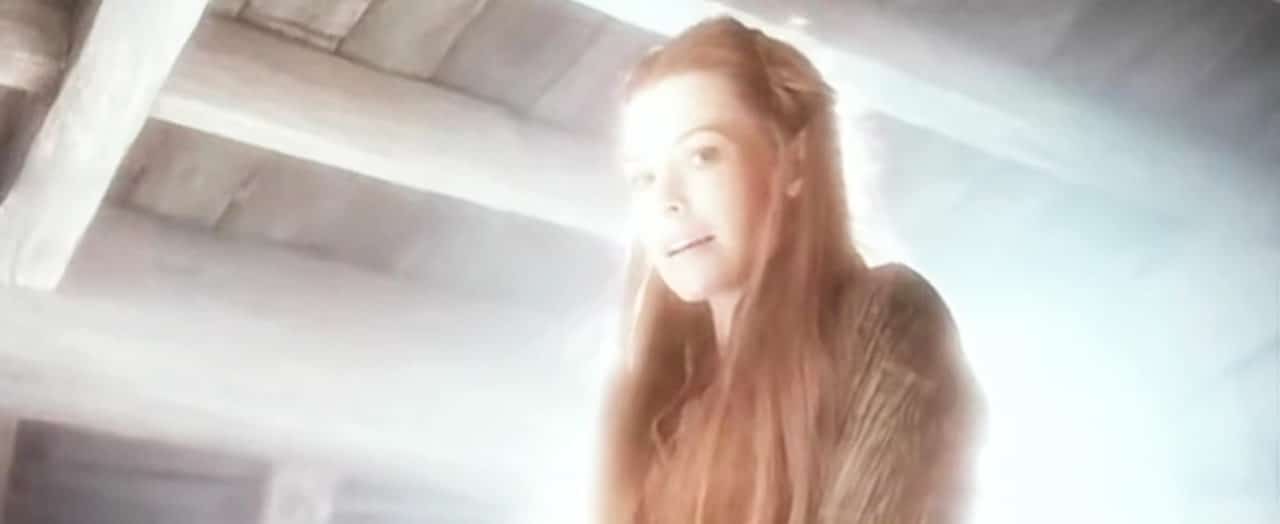I'm looking to achieve something similar to this effect in a short film for 2 shots :

This is from the new Hobbit movie, with of course a massive budget. To me it looks mostly a digital effect they used.
I'm looking for ideas on how i could achieve something close to this - I don't expect to achieve something so polished as Peter Jackson et al. The story uses the "angel" motif as a representation of personal power and self confidence, and this would be a way to demonstrate that visually, as the character feels it, we see it.
I'm not sure if a strong light source behind my actor, and some form of filter (i know little about filters) on the lens would work on it's own?
Or if it's better achieved in post-processing - perhaps in a grading step? If so, ideas on software i should investigate would be much appreciated.